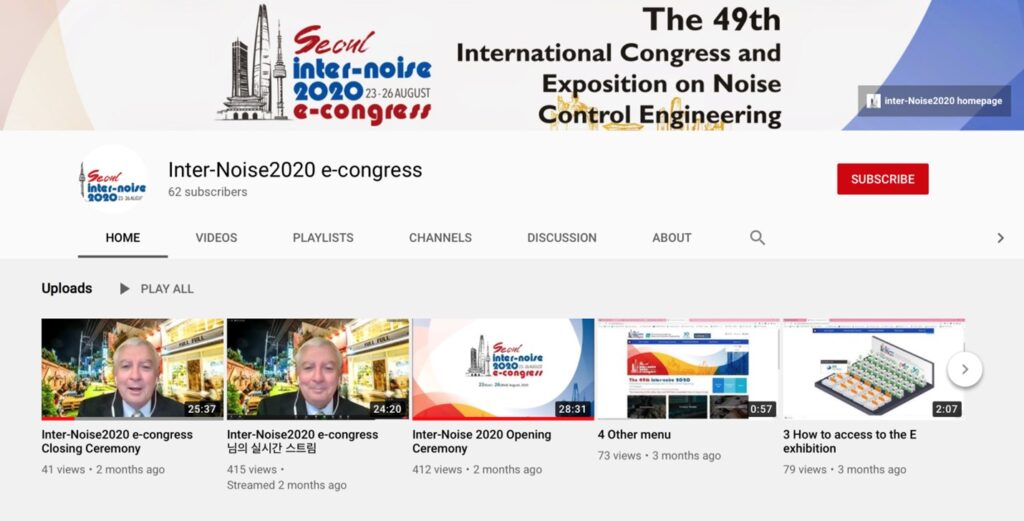INTER-NOISE 2020 Report
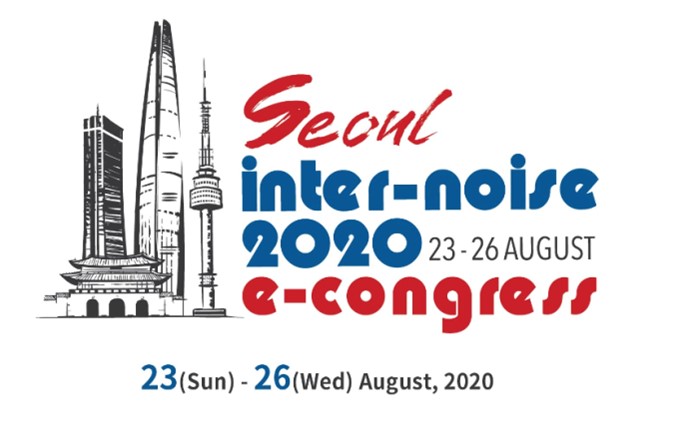
INTER-NOISE 2020, the 49th International Congress and Exposition on Noise Control Engineering, organized by the Korean Society for Noise and Vibration Engineering (KSNE) on behalf I-INCE, was held as an e-congress on August 23–26, 2020. It was originally scheduled to be held at the COEX Convention Center, Seoul, Korea.
With over 865 registered attendees, the conference received 821 abstract submissions with 649 paper submissions, which were spread across 18 different technical areas (involving the participation of 134 international and 80 local area and session organizers). There were 2 plenary lectures, 3 keynote speakers, and 13 special live presentation sessions. While organizing a conference of this size requires significant time and effort from many individuals, the principal congress organizers were Yang-Hann Kim (honorary chair), Semyung Wang (general chair), Jin Yong Jeon (technical chair), and Yeon June Kang (secretary general).
This year, the theme of the conference was “Advances in Noise and Vibration Control Technology,” and contributions came from approximately 50 countries around the world.
Opening the Conference—Sunday, August 23
The opening ceremony took place as a live ceremony with some key figures in attendance in Seoul. It was both livestreamed and available for people to watch again on YouTube (in fact, by the end of the congress, it was viewed over 1,000 times!). It included a series of welcoming remarks and an overview of the e-congress and its technical program.
The general chair, Dr. Semyung Wang, took to the podium to welcome everyone to the congress. He expressed his sincere gratitude to the I-INCE Board for their invaluable contribution in the organization of the conference.
The I-INCE president, Dr. Bob Bernhard, then joined via teleconference to welcome all participants and declared the congress officially open.
Following this, Dr. Moon Kyu Kwak (KSNE president) gave some welcoming remarks. Dr. Yang-Hann Kim, the honorary chair of this year’s INTER-NOISE, then took to the stage to say a few words of welcome and noted that they were opening a new gate to the world through the e-congress.
Dr. Patricia Davies, vice president of I-INCE, then connected to the stage from the United States, via Zoom, to present an overview of the I-INCE technical activities. The opening ceremony then concluded, just prior to the first plenary lecture of the conference.

Plenary Lecture 1—Progress in NVH Technology for Future Mobility
Jaeheon Kim, vice president of Automotive R&D Division at Hyundai Motor Group, gave the first plenary lecture, titled “Progress in NVH Technology for Future Mobility.” In this presentation, he noted that new means of transportation will not just allow new ways of travel; they will change the way we live our lives. He also noted that it is important to look at how these changes of future mobility can affect NVH technology.
The Technical Sessions—Monday, August 24,to Wednesday, August 26
The technical program began on Monday, August 24. Prior to the congress, all authors recorded a video presentation of their paper, and while the conference was in session, all registrants could look at any technical talk they wished, via the e-congress website. There were also options to post questions to the authors and give presentations a thumbs-up. Further, these videos could be accessed by participants for a number of weeks after the conference ended.
There were 18 technical sessions in total—covering everything from acoustic materials to artificial intelligence for noise/vibration engineering.
From a personal perspective, while I was disappointed not to travel to South Korea and have the usual back-and-forth discussions, I found the e-congress website easy to navigate, and I was very happy to change from session to session at the click of a button—no rushing between rooms and trying to close doors silently during a talk. It was truly an impressive congress experience, especially considering the organizing committee had so little time to pivot from in-person to an e-congress.
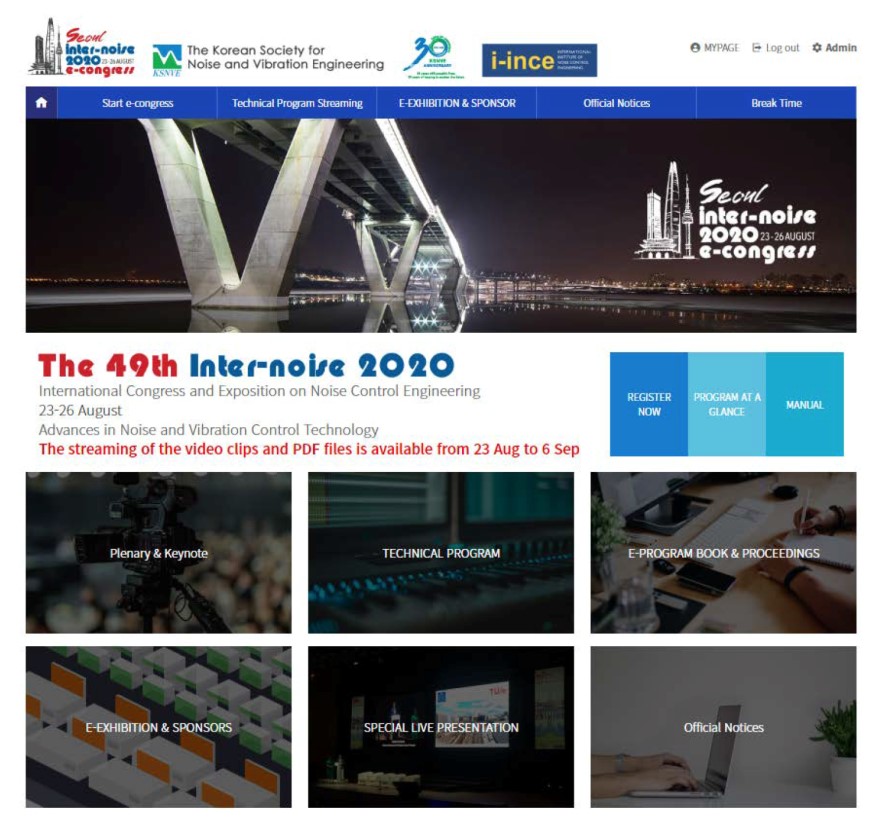
To complement the recorded video presentations, there were a number of events that were livestreamed. These included the opening and closing ceremonies, the plenary and keynote lectures, and some special presentations. There were different live sessions each day. Attendees could log in to different rooms via Zoom, and at the end of each presentation, there was time for questions.
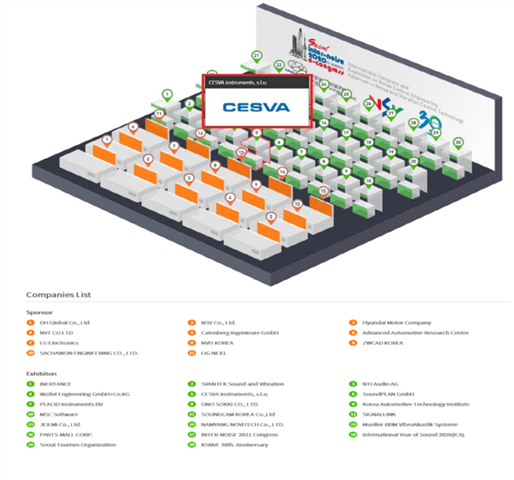
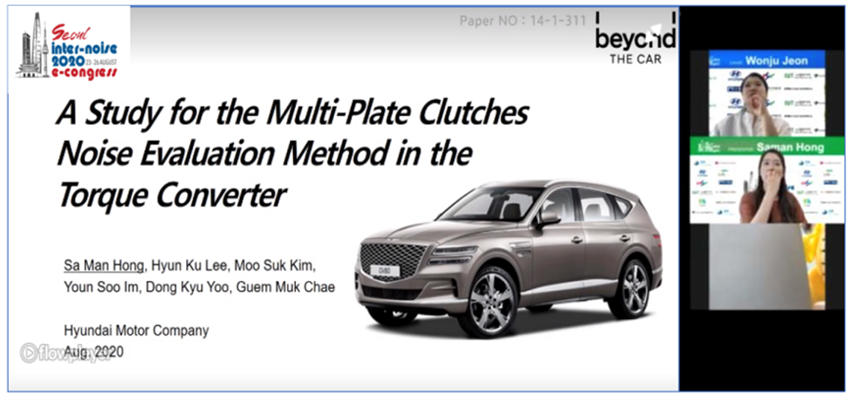
Plenary Lecture 2—Current Trends in Urban Soundscape Research
The final plenary lecture was from Dr. Catherine Gustavino, an associate professor at McGill University (Montreal, Canada). Her lecture summarized recent trends in soundscape research. She started with a brief history of 50 years of soundscape research, and with this context, she gave an overview of the interdisciplinary cognitive approach to soundscape developed over the last 20 years. She then introduced the Quality of Urban Public Experience model. Her talk concluded with a summary of the main challenges for soundscape research and presented a research agenda for future work.
Keynote Lectures
Along with the plenary lectures, the following three keynote lectures were presented.
Keynote Lecture 1: Spatial Hearing and Virtual Auditory Display
Bosun Xie (Director, Acoustic Lab, School of Science, South China University of Technology) and Michelle C. Vigeant (Graduate Program in Acoustics and Department of Architectural Engineering at the Pennsylvania State University)
During the past two or three decades, virtual auditory displays have become a hot topic in the field of acoustics and signal processing. This presentation outlined the principles of spatial hearing and then comprehensively reviewed the principles, progresses, and applications of virtual auditory displays, including some recent works from the authors’ research groups.
Keynote Lecture 2: Acoustic Black Hole
Wonju Jeon (Department of Mechanical Engineering, Korea Advanced Institute of Science and Technology) and Mikhail Mironov (head of the Theoretical Laboratory at Andreev Acoustics Institute, Moscow, Russia)
This keynote began with a question: Is it possible to slow down the propagation of a wave on a way of finite length so that the propagation time would be infinite? Well, it turns out that the answer is yes. This authors gave an overview of acoustic black hole (ABH) research. They then then outlined a number of the theoretical, numerical, and experimental aspects of their research studies. The lecture ended with ideas for the practical application of ABH to real-world problems, including perspectives and opportunities of ABH for the researchers in structural vibrations, vibro-acoustics, and wave physics.
Keynote Lecture 3: Floor Impact Sound Transmission and Control
Berndt Zeitler (Technical Acoustics and Building Acoustics in the Building Physics Department of the Applied University of Sciences, Stuttgart) and Atsuo Hiramitsu (Equipment Standards Division in Building Department Engineer at National Institute for Land and Infrastructure Management, Ibaraki, Japan, and Cooperative Graduate School Program of Art and Design at the University of Tsukuba)
Several studies around the world have shown that impact noise is one of the main causes of annoyance in homes. It is important to understand the mechanisms of transmission to ensure an appropriate prediction as well as the control of impact sound. In this light, this presentation began with the history of the most common measurement methods. The authors described the physical phenomena related to impact sound transmission and, finally, presented a selection of floor construction details used in different countries along with their corresponding impact sound insulation results.
YouTube Channel for the Congress
If you’d like to learn more about the congress or experience the opening or closing ceremonies, be sure to check out the INTER-NOISE 2020 YouTube channel.
